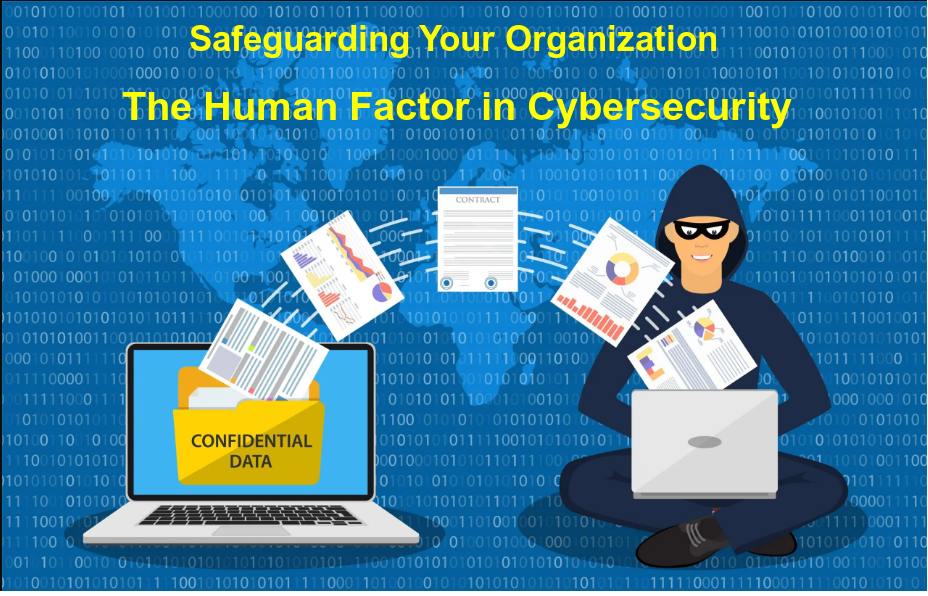Safeguarding Your Organization: The Human Factor in Cybersecurity


The human element plays a crucial role in ensuring cybersecurity, making it imperative to educate and train employees on protecting themselves and their organization against potential cyber threats. Here are some recommendations for educating and training employees in cybersecurity:
- Include cybersecurity training as part of the onboarding process for new employees.
- Provide employees with easy-to-follow guidelines for password creation and management.
- Train employees on how to identify and report phishing emails.
- Use gamification to make cybersecurity training more engaging and interactive.
- Conduct mock cyber attacks to test employee responses and identify areas for improvement.
- Encourage employees to use a VPN when accessing company resources remotely.
- Educate employees on the importance of keeping software and operating systems up-to-date.
- Have IT staff provide regular security updates to employees, such as new threat alerts and best practices.
- Offer incentives or rewards for employees who consistently demonstrate good cybersecurity practices.
- Train employees on the safe use of social media and how to avoid social engineering attacks.
- Conduct regular phishing simulations to reinforce training and identify areas for improvement.
- Provide employees with guidelines on how to securely store and dispose of confidential information.
- Train employees on how to recognize and avoid malware, including malicious downloads and email attachments.
- Create a reporting system for employees to easily report cybersecurity incidents or concerns.
- Educate employees on the dangers of public Wi-Fi and how to safely connect to Wi-Fi networks.
- Train employees on how to secure their home networks to prevent unauthorized access to company data.
- Use case studies to show the real-world impact of cyber attacks on businesses and individuals, and how employees can help prevent them.
- Provide employees with guidelines on how to safely handle sensitive information during video calls and virtual meetings.
- Train employees on how to identify and avoid tech support scams.
- Implement a clean desk policy to reduce the risk of sensitive information being left out in the open.
- Train employees on how to secure their mobile devices and avoid mobile-specific security threats.
- Train employees on how to safely use cloud-based storage and collaboration tools.
- Train employees on how to use web filters to avoid malicious websites.
- Conduct regular security awareness training sessions that cover the latest threats and trends.
- Train employees on how to safely use personal devices for work-related tasks.
- Provide guidelines on how to avoid spear-phishing attacks targeted at specific individuals within the organization.
- Train employees on the importance of maintaining strong physical security measures, such as locking doors and filing cabinets.
- Conduct regular tabletop exercises to simulate emergency response scenarios and ensure employees are prepared.
- Train employees on the importance of verifying the authenticity of requests for sensitive information or access.
- Provide employees with guidelines on how to safely handle credit card information and other payment data.
- Implement a secure coding policy and train developers on secure coding practices.
- Train employees on how to avoid common cybersecurity mistakes, such as using weak passwords or sharing login credentials.
- Provide guidelines on how to securely store and transmit data backups.
- Conduct regular vulnerability assessments on third-party vendors to ensure they meet your security standards.
- Train employees on how to use firewalls and other network security tools to protect against cyber attacks.
- Provide guidelines on how to securely use file sharing services to prevent data breaches.
- Train employees on the dangers of using public computers and how to avoid exposing company data.
- Implement an incident response plan and provide training on how to respond to security incidents.
- Train employees on how to recognize and report suspicious activity on their devices.
- Provide guidelines on how to safely use and store confidential company information on mobile devices.
- Train employees on the importance of using strong encryption to protect sensitive data.
- Conduct regular security awareness assessments to measure employee knowledge and identify areas for improvement.
- Train employees on how to avoid falling for social engineering attacks, such as pretexting and baiting.
- Provide guidelines on how to securely share sensitive information with external parties, such as vendors or clients.




